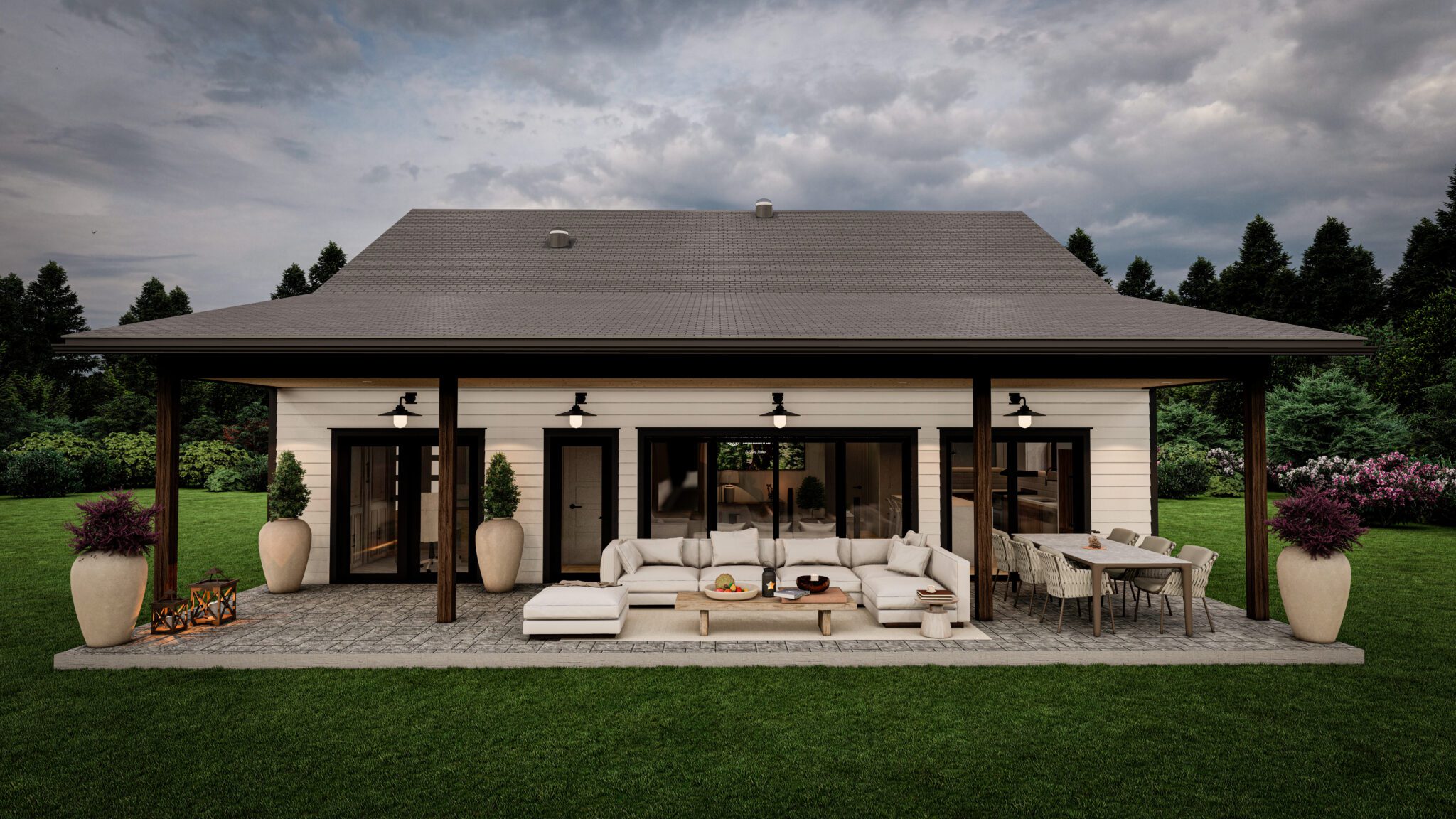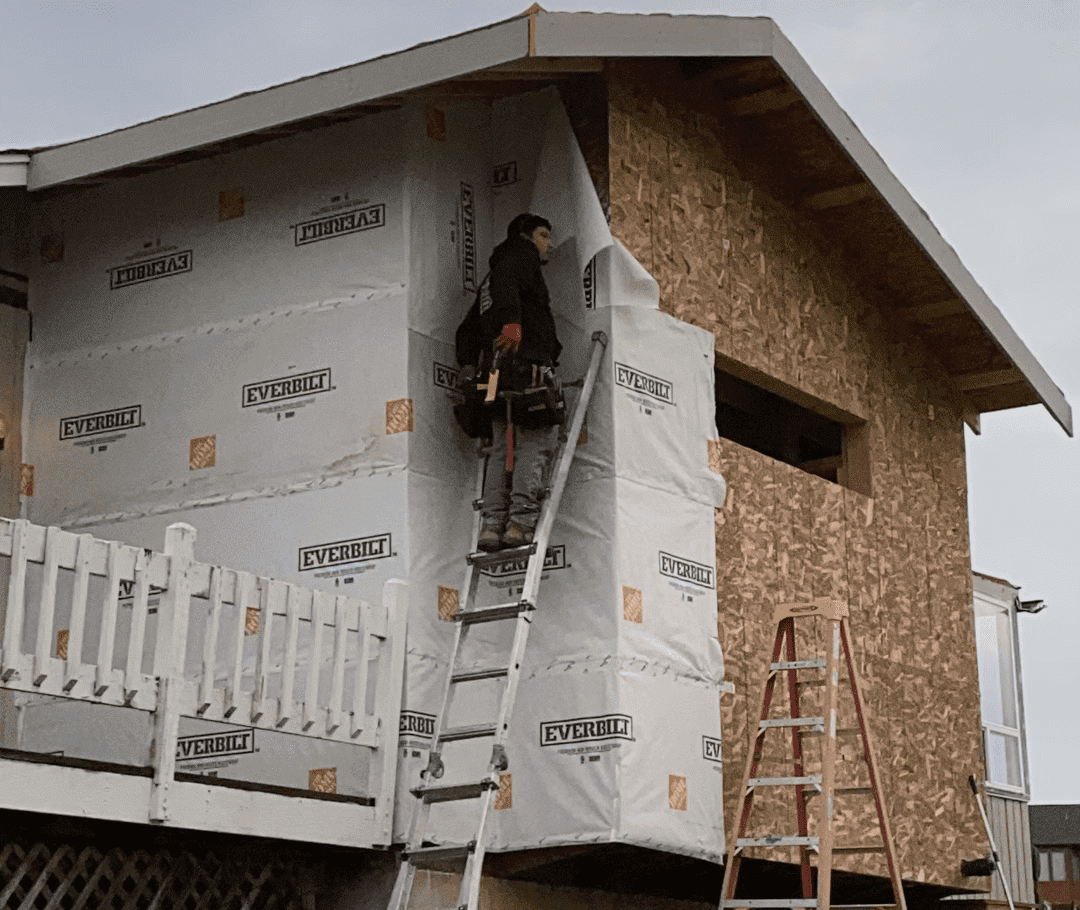When you’re investing in a large outdoor living space—think 600 sq ft and up—the concrete finish you choose sets the tone for everything else. In Bellingham’s damp climate, homeowners often narrow the options to two stand-outs: stamped concrete and exposed aggregate. Both create a custom look that rivals stone while keeping long-term maintenance manageable, but each shines in different ways.
Below, we break down how each finish is made, how it performs in Northwest weather, and which one may elevate your next concrete patio build.
Why Concrete Finish Choice Matters for Luxury Outdoor Living
- Enhances curb appeal and resale value
- Influences slip resistance during wet months
- Affects long-term color retention and sealing schedule
- Aligns the patio aesthetic with your home’s architecture
At PCL we design concrete patios to be the stage for years of gatherings—choosing the right surface keeps that stage looking pristine.
What Is Stamped Concrete?
Stamped concrete is poured as a single slab, colored (integral or broadcast), and then pressed with textured mats while still plastic. The result mimics flagstone, slate, or even wide-plank wood—without the grout lines or rot risk.
Pros
- Huge library of stamp patterns and colors
- Seamless surface—easy snow shoveling in winter
- Faster installation than hand-laid pavers
Cons
- Requires consistent sealing (every 2–3 years) to prevent color fade
- Deep grout-line impressions can collect dirt if not power-washed
What Is Exposed Aggregate?
With exposed aggregate, we place the concrete, broadcast decorative stones, and carefully wash away the top cement cream to reveal colorful river pebbles or crushed granite. The speckled, textured look blends beautifully with Pacific Northwest landscapes.
Pros
- Natural, nonslip texture—great near pools or spas
- Hides minor dirt and pine needles better than a smooth surface
- Can last longer between reseals if a penetrating sealer is used
Cons
- Less pattern variety; color palette is tied to local aggregate choices
- Textured surface can feel rough on bare feet if stones exceed 3⁄8 in.
Side-by-Side Comparison
| Feature | Stamped Concrete | Exposed Aggregate |
|---|---|---|
| Visual Style | Mimics stone, brick, even wood | Natural, speckled river-rock look |
| Slip Resistance | Moderate (add grit sealer) | High—ideal for wet zones |
| Maintenance | Reseal every 2–3 yrs | Reseal every 3–4 yrs |
| Comfort Underfoot | Smooth | Textured/rougher |
| Custom Color Options | Unlimited integral & stain combos | Limited to stone colors |
| Typical Cost (2025) | $$–$$$ | $$ |
Which Finish Fits Your Project?
Choose stamped concrete if you want:
- Exact match to your home’s masonry or siding tones
- Clean lines for modern or formal designs
- A surface that stays comfortable under patio furniture legs
Choose exposed aggregate if you value:
- Natural, Pacific Northwest vibe that hides dirt well
- Maximum traction around hot tubs or pool decks
- Subtle elegance that complements lush plantings
Still deciding? Our design team can create side-by-side 3-D renderings during the concept phase, so you can visualize each option under real-world lighting.
The PCL Design-Build Advantage
Because we own the entire process—from LiDAR site mapping to the final sealer coat—you avoid the miscommunication that often happens between designers and concrete crews. Precise base prep, proper rebar spacing, and drainage planning are baked into the design, ensuring your investment performs for decades.
FAQs
How long does a stamped concrete patio last in Whatcom County’s climate?
With proper sealing and drainage, expect 25–30 years before any major resurfacing is needed.
Will exposed aggregate stain from fallen leaves or cedar needles?
Organic stains are less visible thanks to the multicolor stone mix, but a light power-wash each spring keeps the surface fresh.
Can I add radiant heat to either finish?
Yes. Hydronic tubing pairs well with both stamped and aggregate surfaces; we simply adjust the slab thickness and insulation.
Is a permit required for a large concrete patio?
In most Bellingham neighborhoods, yes—especially if the slab exceeds 200 sq ft or changes site drainage. PCL handles the paperwork for you.
Ready to Explore Finishes on Your Own Site?
Book a complimentary site visit to see large-format color samples and get a precise 3-D layout of your future patio. Let’s turn that muddy backyard into a memorable outdoor destination.
Additional Resource: Learn more about decorative concrete best practices from the Portland Cement Association.



